
Why the C-suite should embrace, empower Supply Chain
How does Supply Chain activate the C-suite tractor beam?
By Rick Dana Barlow
Few will dispute that Supply Chain must coexist, collaborate and cooperate with the so-called Demand Chain so that the fulfillment system rotates properly, spinning forward, not unlike the economic principles of supply and demand.
This age-old tugging back-and-forth represents a classic example of kinetics in physics of push vs. pull.
The concept also raises a unique perspective on another sensitive topic that has been simmering for decades – the Supply Chain’s seat in the C-suite.
Reviews have been mixed, largely based on the concept of what comprises supply chain and the type of individual who leads – not just manages – supply chain either as a department, function, a service or an enterprise. Each may be defined differently.
Many of the Type A personalities in supply chain executive and leadership circles may feel they’ve done as much as they can to gain recognition for the department, function, service or enterprise based on strategic and tactical outcomes. They further ponder why they’ve hit a plexiglass ceiling and can ascend no farther. The door to the C-suite remains ajar, if not widely open, to them, and a chair at the table is available for them, when necessary, but they’re not yet truly accepted as an official, recognized contributor or member of the team – an executive peer, so to speak.
Others feel supply chain may not and may never be exalted to the C-suite ranks because it technically serves as a function within finance or operations – or maybe maintains a dotted line to both in some convoluted power-sharing arrangement designed to sate ambitious attitudes and soothe hard feelings for progressing higher.
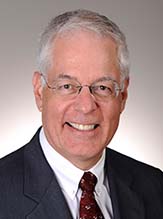
George Hersch
During the Bellwether Induction Event two years ago, one Honoree being inducted into the Bellwether Class of 2019 that night nicked a nerve. During his impassioned acceptance speech, George Hersch raised a curious point that turned an oft-held belief or sense of entitlement by achievement on its head. Paraphrasing, it went something like this: We as an industry spend so much time trying to push Supply Chain into the C-suite … maybe we need to concentrate on showing why the C-suite should be interested in inviting Supply Chain.
It was one of those revelations that turned perspective on its ear – akin to writing and reading stories about real people in a super-hero world, for example, vs. writing and reading stories about super-heroes in the real world. Either way: Mind. Blown.
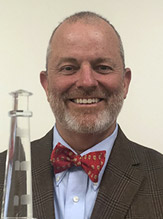
Ed Hardin
As a result, Leaders & Luminaries opted to take Hersch’s conceptual hand-off (a thinly veiled nod to football season) and run with it, just as the pandemic was starting to spread rapidly around the world. Leaders & Luminaries reached out to the Bellwether Community for their thoughts and insights about the topic. Roughly a dozen active and retired senior-level executives weighed in. Out of respect for his astute and strategically appropriate observations and comments prior to his passing in January, Leaders & Luminaries includes the wise words of the late Ed Hardin, Bellwether Class of 2020.
How can the C-suite pull Supply Chain in by recognizing its contributions to bottom-line savings, top-line revenue and strategic insights to enterprise thinking?
Healthcare Supply Chain executives and leaders raise intriguing but sensible options.

Tom Lubotsky
“Engaging Supply Chain leadership and its subject matter experts in key leadership forums or commissioned areas of work that address an array of strategic imperatives is one way to recognize Supply Chain importance,” said Tom Lubotsky, Senior Vice President, Supply Chain, Allina Health, Bronze Sustaining Sponsor. “Too often, Supply Chain may be an afterthought and brought in too late to address key elements that require its intervention. For example, many growth initiatives may involve expanding specific units of business such as clinic or subspecialties into a healthcare system’s geographic footprint. To attract new subspecialties, it is usually better to address what physician product preferences exist upfront, especially if committed supplier agreements exist for devices or technologies. In this fashion, a coordinated and well communicated set of expectations can be discussed and agreed upon versus creating unnecessary tension downstream once physician subspecialists are already formally signed on.”
Focusing on the expansive nature of Supply Chain’s growing realm of influence also matters, according to Lubotsky.
“Highlighting supply chain non-labor accomplishments or challenges as part of a healthcare system’s financial scorecard is another way to recognize Supply Chain’s contribution,” he continued. “Each month, there is an opportunity to feature specific work that can demonstrate the performance among key Supply Chain initiatives. While publishing this performance is key, more importantly is the level of supply chain engagement among healthcare system’s monthly operating reviews. This type of review can bring more visibility to the key areas of focus Supply Chain is addressing, including the range of activity that touch various functions across the healthcare system.”
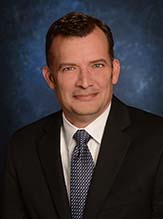
Shaun Clinton
Shaun Clinton, Senior Vice President, Supply Chain, Texas Health Resources, Bronze Sustaining Sponsor, concurs.
“Quite simply, create a KPI for the organization as a whole that supply chain will have an outsize influence on the attainment,” he recommended.
“Healthcare organizations thrive [when] its many diverse professions interact and support each other in the interest of patient care,” observed George Hersch, Bellwether Class of 2019. “This is much like a well-oiled machine. Top leadership can be the oil that makes the healthcare machine run. Implementing supply chain initiatives successfully can thrive with leadership’s involvement. The system CEO, COO or CFO should take the opportunity to discuss key supply chain initiatives with hospital leadership. Enthusiastic support from top management can help hospital leaders understand the savings and revenue impact of specific initiatives. This is especially fruitful when a hospital is not meeting its financial targets.”

Ed Hisscock
The C-suite may emphasize the economics, and rightly so, according to Ed Hisscock, Past Board Member, Bellwether League Inc., Senior Vice President, Supply Chain, Trinity Health.
“Establish year-over-year budgeted supply chain contribution expectations,” Hissock indicated. “Budget performance is reviewed at a frequency and performance associated with supply chain contributions will be visible and celebrated or chastised as warranted.”

Dee Donatelli
There’s really no way not to home in on the financials, emphasizes Dee Donatelli, Bellwether Class of 2015, Vice President, Professional Services, symplr.
“Today supply chain success is measured by the holding flat supply cost inflation or hitting a cost reduction percent based upon last year’s overall spend,” she said. “As a result of this measurement supply chain will not ever move out of the basement and into the board room. When Supply Chain leaders have conversations with their executives to discuss strategically how the goals of supply chain support the mission of the organization beyond cost, then there will be a much greater recognition achieved.”
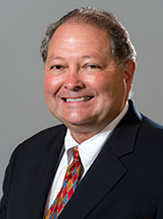
Rand Ballard
Hope should spring from the highest levels, according to Rand Ballard, Chief Customer Officer, Vizient Inc., Founding Sustaining Sponsor.
“The C-suite should reward supply chain executives who meet their commitments, continue to drive out costs and improve quality by assuring supply chain decisions do not adversely affect quality,” he noted. “If those things happen, top-line revenue can grow on profitable service lines.”
Opportunities stemming from accurate data and effective technology use can turn heads.
Culture clasp

Siobhan O’Bara
“Recognizing its value comes with optimizing the supply chain through ongoing investment, management and maintenance to support the essential foundation of quality data,” said Siobhan O’Bara, Senior Vice President, Industry Engagement & Services, GS1 US Healthcare, Silver Sustaining Sponsor. “It is easy to defer spending on supply chain systems and functions. Yet the value that comes from continuously supporting the evolution of technology, systems and infrastructure maximize an organization’s opportunities to receive and leverage valuable information from their processes. With good master data and strong stewardship, the supply chain can have a tremendous impact on the organization’s efficient operations as well as cost savings and revenue.”
Sometimes, simple recognition can be just that – verbal acknowledgement of Supply Chain’s value.
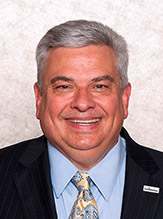
Jim Francis
“I don’t think there is anything better than verbal recognition and acknowledgement of the contributions supply chain makes at a leadership meeting or verbalized directly by your superior to you or your team,” suggested Jim Francis, Bellwether Class of 2017, Chair, Supply Chain Management, Mayo Clinic. “As long as it is shared with the entire supply chain team as part of a normal communications it is as powerful as any other recognition.”
Ed Hardin, Bellwether Class of 2020, Vice President and Chief Supply Chain Officer, Froedtert Health, before his passing in January 2021, points to a trio of foundational tactics that should emerge from the C-suite.
“First, the C-suite can start to design our performance management and subsequently our incentive programs to account for supply chain’s contributions,” he noted. “Seems obvious, but most organizations value these metrics at a global level rather than at the department level. I am frequently astounded by the number of department heads who have no knowledge of their supply spend much less those whose performance appraisals are based upon non-labor expense management.
“Second, the C-suite can empower supply chain to communicate the results of their reporting through tools that make the results readily available, intuitive and attractive to use,” he continued. “Froedtert Health uses Workplace, a social media tool developed by Facebook, to communicate its monthly scorecard amongst other important news.
“Third, the C-suite can elevate the importance of supply chain by carving out time on meeting agendas to report on the performance and goings on of supply chain. Better yet, having supply chain leadership inclusion on key committees, councils and task forces can then ensure more of a ‘push’ of information on the part of supply chain rather than a ‘pull,’ a far more proactive approach to communication,” he added.
How can the C-suite keep Supply Chain on its radar if what Supply Chain contributes actually benefits the organization and patient care?
For Hersch, that effort emanates first from Supply Chain.
“Charles Housley (Bellwether Class of 2008), a well-respected hospital administrator and supply chain expert, once said, ‘If you don’t blow your own horn, someone will turn it around and use it as a funnel against you.’ Supply chain leaders have an obligation to transmit their knowledge of and passion for supply chain to members of the C-suite, Hersch urged. “This might include a discussion of how physicians, clinicians and other team members come together to create successful supply chain initiatives. For example, the best way to educate a C-suite member of the effectiveness of a physician-led Technology Assessment Program is to invite him/her to attend a robust discussion about the financial and patient-care impact of a new physician requested technology. The success of this program should also be expressed through widespread communication documenting cost savings and improvements in patient care as a result of specific technologies.”
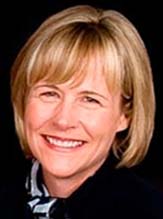
Mary Starr
Mary Starr, Bellwether Class of 2019, Vice President, Member Services, Greenhealth Exchange, agrees.
“I would say this is the responsibility of the Supply Chain leader, and not the C-Suite,” she indicated. “The contribution of supply chain goes well beyond just cost and patient care. The procurement decisions can impact the environment, the community and other strategic focused components that are top of mind for healthcare leaders. The connection and positive impact need to be illustrated by the supply chain on a regular basis.”

Carl Meyer
Trinity’s Hisscock emphasizes the Supply Chain leader’s marketing prowess as necessary.
“I do not indict the C-suite for lack of supply chain attention,” he decided. “Rather, I believe that supply chain professionals need to market their contributions and constantly seek alignment with C-suite expectations. Simple tactics like directly associating the contributions to the organizations strategic plan, vetting annual goals with senior leadership and finding ways to extend the supply chain contributions beyond cost savings (e.g., patient safety benefits, quality improvements, community benefit implications, etc.). We are not gifted respect; we need to earn it.”
Marketing starts with communication, according to symplr’s Donatelli.
“Supply Chain needs to translate their worth in terms which resonate with executives,” she indicated. “What are the top issues that keep C-suite awake? An example might be the affordability of healthcare. Supply Chain can translate this into the work they do around the CQO movement of their AHA Professional Membership Group, AHRMM.
“Supply Chain falls short in its ability to ‘sell’ itself into the C-suite,” Donatelli continued. “The need for improved strategic positioning and skills to market and document how supply chain is making contributions or playing key roles in the organizations’ overall mission is critical. We do not see enough supply chain executives promoting the goals and outcomes of supply chain as a key role in their organization’s overall success.”
Still, Supply Chain inherently should be on the C-suite’s radar, according to GS1’s O’Bara.
“By default, supply chain performance is on the C-suite’s radar because in most hospitals, it is the second-highest expense category, second only to the cost of employment – not to mention the impact of end-to-end visibility on patient safety measures,” she said. “A well-managed supply chain has potential to improve patient outcome analysis, as well as use and inventory of all products. In addition, supply chain transparency offers significant cost savings by providing robust information that can be used to better manage pharmaceutical and medical device order-to-cash processes and enable quick and precise withdrawals or mitigate shortages. Quite simply, it empowers decision-makers to better forecast to help the hospital navigate operational challenges and opportunities.
“Supply-chain infrastructure and operations are not discretionary budget items,” O’Bara continued. “In healthcare, as in few other industries, the cost of failure is extremely high – literally a matter of life and death. The risk of a compromised patient outcome is so significant that excellence is not a wish but an absolute necessity.”
C-suite acknowledgement, interest and respect must be holistic, THR’s Clinton insists.
“C-suite executives should recognize value not just in times of need or crisis, but when things are calm as well,” Clinton said. “The ability to ask opinions and respect those opinions is also key to keeping supply chain on the radar.”
Mayo Clinic’s Francis highlights the chain of command or executive hierarchy as instrumental for C-suite attraction to Supply Chain.
“First, supply chain management must be represented at the C-suite either by your superior (e.g., CFO) or directly by the chief supply chain officer,” he said. “Second, routine reporting and demonstrated value creation through scorecards and financial results is the most obvious and probably best way of keeping supply chain management on the radar. If the supply chain operation goes above and beyond its primary purpose of supporting patient care, it will be viewed by the C-suite as a potential resource to address other needs or issues. Finally, a trusted, strong relationship with the clinical practice will also ensure that supply chain is respected and valued by upper leadership.”
The C-suite-Supply Chain connection should be embedded deeply within a healthcare enterprise, Allina’s Lubotsky envisions.
“Each healthcare system has formal strategic objectives that are centered on specific area of focus or what often is referred to as ‘pillars’ – financial health, safety, patient experience, employee engagement or growth,” he noted. “The alignment to the goals and strategic imperatives among all the functional disciplines (i.e., patient care, finance, operations) are arranged accordingly. Supply Chain should ensure that it lays out its strategic initiatives to these corporate pillars so that there is a clear line of sight of the contribution and benefits offered by Supply Chain. Sometimes these initiatives are endorsed value streams of work that have leadership sponsorship assigned, a dedicated set of improvement resources and cross functional teams to support the work (e.g., Preference or Procedure Care Variation of Care Management). This kind of formalized goal architecture can then display how Supply Chain is contributing directly to the set of strategic pillar work being performed.”
Supply Chain also should issue its own performance measurement report.
“It is crucial that Supply Chain establishes a broad scorecard that highlights key strategic focus, initiatives and measurements of accomplishment,” Lubotsky continued. “Distributing this scorecard routinely – usually monthly – can further keep Supply Chain in front of the C-Suite on all its essential contributions and benefits. Highlighting this scorecard would be specific work associated with patient care, value based contracting, cost control, and service levels that embellish on its merits of achievement.
“Finally, most healthcare systems have established system-wide safety huddles that often address key concerns surrounding product defects, shortages, service issues associated with supply chain,” he added. “Simply being part of these daily huddles and responding to issues that required supply chain intervention provide a visible opportunity to demonstrate to C-suite leadership the key manners by which Supply Chain is engaged and contributing a safer patient care environment.”
Ballard supports the Supply Chain leader as C-suite officer as a “best demonstrated practice … on par with the Chief Nursing Officer, Chief Medical Officer, etc. And this Chief Supply Chain Officer should be an integral component of the clinical integration team, improving patient care across the care continuum.”
Supply Chain output naturally should attract and draw C-suite interest, according to Hardin.
“Assuming supply chain has done its job and implemented a leading practice reporting methodology (e.g., regular cadence, balanced, KPIs based upon customer input, inter and intra departmentally publicized, etc.), the C-suite should respond accordingly with their interest,” he noted. “That is, if you designed the right methodology, then you are likely to be reporting on indicators that interest several members of the C-suite. For instance, Froedtert Health’s balanced scorecard has the attention of Human Resources, Diversity & Inclusion, Quality Management, Sustainability and, of course, Finance because these key performance indicators are of keen interest to these functional areas. Easier said than done, but we have found that having designed the right methodology and consistently applying that methodology over the long haul, creates relevancy for supply chain within the C-suite.”
So what clouds the minds and vision of C-suite executives to miss or overlook what Supply Chain contributes to the organization and to patient care?
Healthcare Supply Chain executives and leaders acknowledge that C-suite officers face numerous opportunities that can be distractions and must juggle multiple priorities.
“C-suite executives on a daily basis are faced with a barrage of opportunities and have to prioritize where they will invest their time, resources and political capital,” said Meyer. “Each system has different priorities, [which] may include M&A, negotiations with Insurer’s, negotiations for direct contracting with large local employers, physician recruitment, network build-out, etc. Effective Supply Chain leaders, when given the opportunity, need to be able to articulate how their departments efforts are supporting the goals and objective of the C-suite.”
Ballard homes in on the clinical concentration.
“I believe many C-suite executives have hospital-physician alignment strategy at the top of their mind,” he observed. “That is key for many organizations’ success going forward as the world evolves. Additionally, the continued pressure to eliminate avoidable quality errors which affect morbidity, hospital acquired infections, etc. is top of mind for C-suite executives.”
Clinton questions the connections.
“For a very long time, C-suite executives have not associated the data with the boxes,” he said. “Meaning, supply chain has been seen as the managers of a process and not as the curators of rich business intelligence.”
Revenue most likely remains the distraction, according to Hisscock. “As the industry pivots away from the current complex reimbursement models to, in some ways, even more complex risk-based revenue models, executive attention is necessarily consumed with navigating those changes,” he added.
Hersch recites a naval metaphor.
“My father once told me that the most important part of his naval destroyer escort was the ship’s engine room,” he recalled. “He was Chief Engineer of the SS Lee Fox in WWII. Dad said that a well-run engine room kept the ship out of trouble. This held true whether the ship was navigating rough seas in a typhoon or avoiding an enemy torpedo. A strong hospital supply chain is like a well-run engine room. Out of sight and out of mind – until things go wrong.
“The C-suite often focuses on achieving healthy revenues and strategic growth,” Hersch continued. “That makes for good boardroom discussion. Everything else is below the water line and expected to run well. The C-suite rarely asks about the development and execution of supply chain strategy that averts crisis in periods of severe drug and supply shortage or addresses ways to control the medical supply formulary. With concerns about bottom line growth, patient satisfaction, physician negotiations and other hot topics, discussion about supply chain operations rarely appears on the CEO agenda.”
Francis acknowledges how Supply Chain can get lost in the flurry and fury of details, but it shouldn’t be permanent or even routine.
“No question that in very large, complex organizations such as academic medical centers, with multiple core competencies such as clinical practice, research and education functions, along with major diversification activities, there are many other priorities and distractions for C-suite executives,” he indicated. “Don’t let this lead you to believe they are not aware of what supply chain does or contributes. As I tell the team, if you think what you do is not important just fail to deliver needed products and supplies one time and you will quickly learn how important supply chain is to the operation of our organization. C-suite executives seek competency and excellence in the delivery of supply chain services. It’s important that all supply chain executives stay abreast of major strategic issues and keep C-suite executives aware of what is going on in supply chain management.”
O’Bara encourages the need for the C-suite to welcome Supply Chain in what should be its rightful place among colleagues and peers with data being key.
“Historically, supply chain may have been viewed as a necessary background function, but with operational costs increasing and demands on supply chain outcomes being even greater, high-performance organizations have elevated the role within their organizations,” she observed. “One key area of focus for all supply chain leaders is that of master data. Improved performance in areas of inventory management, transparency and customer satisfaction are likely to be linked to an optimized master data management program. The best supply chains leverage quality data in far greater ways than simply success on delivery of products from point A to point B.
“Quality data is an outcome of strong master data management practices from which supply-chain functions are linked to improve efficiencies, patient safety and outcomes, and an organization’s bottom line,” O’Bara continued. “That master data is used to inform, guide and measure business processes from reimbursement to patient care formularies and surgical equipment reporting, standardization, inventory and more. Complete and accurate data that is searchable, shareable, and linkable is the key to effectively managing products, drugs and devices. That information empowers healthcare organizations to understand their product decisions and how they correlate with clinical efficacy as well as patient outcome and improvement. You can’t manage what you don’t measure, and accurate, complete data is critical. Considering the intricacy of physical and digital data today, a successful organization is completely reliant on a supply chain that is powered by good data stewardship.”
Healthcare merely needs to emulate other industries when it comes to supply chain, according to Lubotsky.
“First and foremost, C-suite executives are centered on ensuring their sites of care are operating in the safest environment for patients and caregivers,” he acknowledged. “In addition, their proclivity to concentrate on the myriad other priorities associated with quality (care and service), top-line revenue growth (scale) and physician relationships only add to their already crowded agenda. While these executives are certainly attuned to lowering system costs in light of tougher reimbursement climates, most do not dig down to the full range of supply chain capabilities beyond better acquisition cost control.
“While other industries outside of healthcare treat supply chain as a strategic asset and a means to meeting their overall goals and objectives, healthcare provider system leadership have not immersed themselves on how supply chain can address not only meeting stated cost targets but also to corporate goals of growth, a safer environment and a more reliable service fostering the full range of continuity of care,” Lubotsky observed. “Other valuable benefits of a mature supply chain can also contribute to better asset management, procure to pay efficiencies, minimizing variation of care and a higher level of engagement among its associates, including higher patient satisfaction. Thinking beyond the traditional supply chain locus and expanding its touchpoints that addresses consumer satisfaction – particularly in the home – are new frontiers that supply chain can indeed make a larger impact.”
Hardin places any blame squarely on the shoulders of C-suite executives and Supply Chain executives shared.
“Borne out of fear of risk, or perhaps unwillingness to toot our horn, or inability to do so, we tend to shy away from communicating our performance beyond simple financial metrics,” he said. “I have spent a great deal of my career asking my leaders and organizational peers what metrics do they find important. Finance has their interests, Human Resources has theirs, our customers have theirs, our vendors have theirs, and so on. A balanced scorecard approach to supply chain performance seeks to address multi-disciplinary needs. Branching out beyond cost performance says to the C-suite that ‘I can walk and chew gum at the same time.’
“Remaining tenacious and transparent is like a continuous knock on the door that eventually someone will have to answer,” Hardin emphasized. “Willingness to put it out there for others to see says, ‘I am willing to be accountable.’ I would like to see more of us look in the mirror and ask ourselves if we have truly done what is necessary in terms of what our leaders would like to see reported and making a genuine effort to report such things with regularity and clarity first before whining that the C-suite is not listening. Ask yourself, what are they not listening to?”